Jupiter images: what do NASA James Webb Telescope pictures show? Great Red Spot, moons and aurora explained
and live on Freeview channel 276
The James Webb Space Telescope (JWST) has provided yet another astonishing image of the universe, capturing one of humanity’s best pictures yet of solar system giant Jupiter.
NASA’s flagship space project, which is named after one of the key figures in the Apollo moon landings, was launched in 2021 to give us a glimpse of the early universe.
Advertisement
Hide AdAdvertisement
Hide AdIn July, after months of spaceflight and testing, it beamed its first images back to earth - pictures that displayed a high-definition view of deep space.
So what do James Webb’s Jupiter images show?
Here’s everything you need to know.
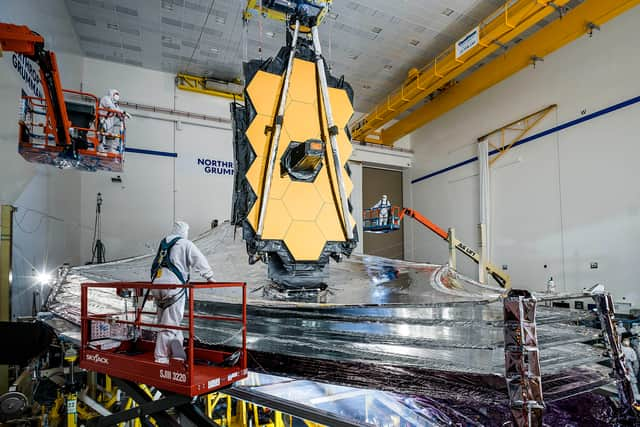

What do the JWST Jupiter images show?
There are two images the James Webb Space Telescope has taken of Jupiter that have been released to the public.
Both are made up of a composite of several images from the JWST.
NASA has applied colour to them as they were taken in the infrared spectrum, i.e. radiation wavelengths that are longer than visible light and which the human eye therefore cannot see.
The first shows a standalone view of Jupiter.
Advertisement
Hide AdAdvertisement
Hide AdIn the picture, auroras can be seen at high altitudes above the gas giant’s north and south poles.
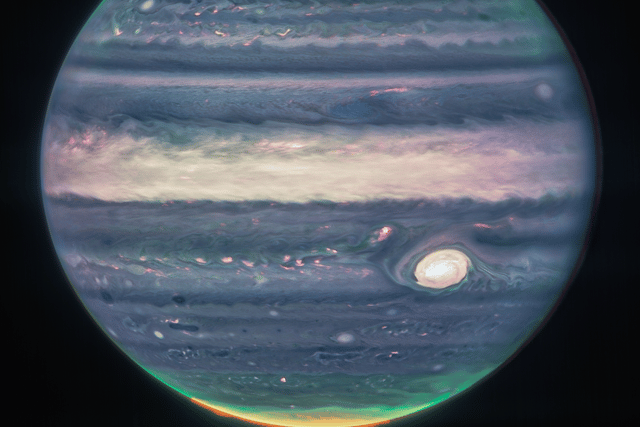

These features work in exactly the same way as they do on earth, and are a sign of the sun’s energy colliding with the planet’s magnetic field.
They are shining so brightly in the image because low clouds and high altitude hazes are reflecting their light and sunlight back.
Also on show is the distinctive Great Red Spot - a centuries-old storm that is so large it could swallow the Earth whole.
Advertisement
Hide AdAdvertisement
Hide AdIt appears as white in the image, NASA says, because it is reflecting a great deal of sunlight which indicates the storm is raging at a high altitude in the planet’s atmosphere.
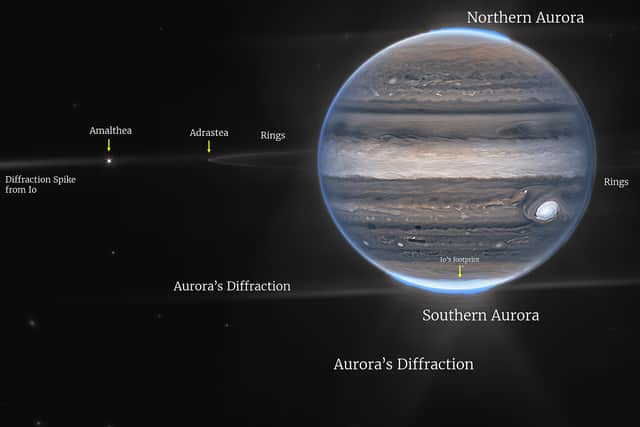

The darker areas on the planet’s surface indicate low-level or non-existent cloud cover.
In the wide-field view of Jupiter, its moon and rings can be seen around the planet.
These rings are a million-times fainter than the gas giant, NASA says.
Advertisement
Hide AdAdvertisement
Hide AdTwo small moons - Amalthea and Adrastea - can be seen to the left of Jupiter.
Named after figures from Greek mythology, the moons are both tiny space rocks that are tiny compared to our own closest satellite - the moon.
Amalthea has a diameter of just 167km, while Adrastea measures just 16.4km across.
Our moon has a diameter of 3,474.8km, making it 20-times the size of Adrastea and 211-times the size of Adrastea.
Advertisement
Hide AdAdvertisement
Hide AdAlso in the wide shot are several fuzzy bright dots, which NASA described as “photobombing” galaxies.
What has NASA said about Jupiter images?
NASA says the new images of Jupiter will give scientists a greater understanding of the planet’s inner workings.
Professor Thierry Fouchet, an astrophysics expert at the Paris Observatory - one of several institutions helping NASA analyse James Webb’s data - said: “This one image sums up the science of our Jupiter system program, which studies the dynamics and chemistry of Jupiter itself, its rings, and its satellite system.”
Fellow planetary astronomer from the University of California, Berkeley Professor Imke de Pater said: “It’s really remarkable that we can see details on Jupiter together with its rings, tiny satellites, and even galaxies in one image.
Advertisement
Hide AdAdvertisement
Hide Ad“We hadn’t really expected it to be this good, to be honest.”
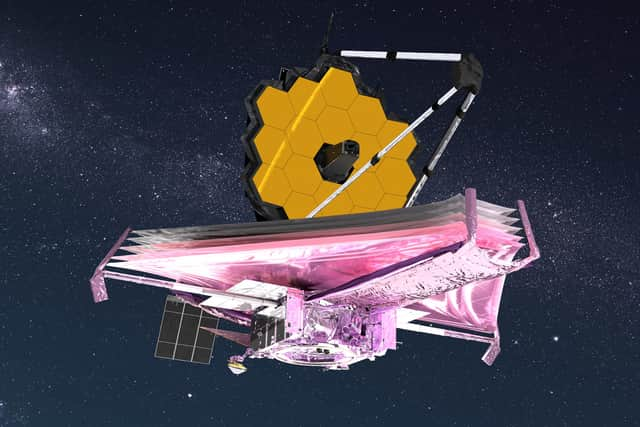

According to NASA, capturing Jupiter in this level of detail was a major challenge for its image processor Judy Schmidt.
The planet’s fast rotation means it is hard to bring together a composite image because it can constantly throw off the alignment of the pictures making it up, the US governmental organisation said.
Data from the telescope also does not arrive in an image format.
Advertisement
Hide AdAdvertisement
Hide AdThe files beamed back to earth merely contain information about the brightness of the light captured by JWST’s detectors.
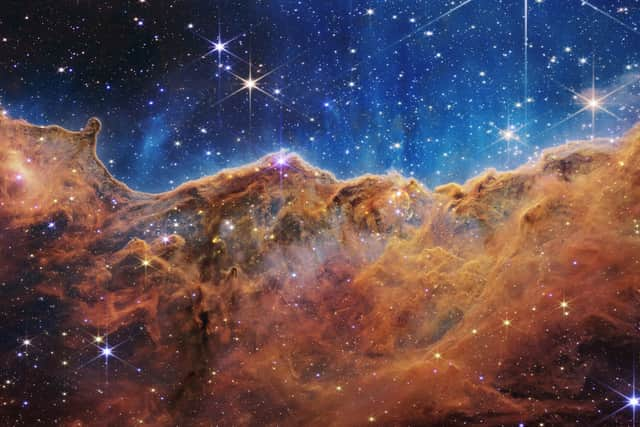

In the case of these images, the detectors James Webb used included a Near-Infrared Camera (NIRCam), which has three different infrared filters mapping different wavelengths.
The shortest wavelengths (i.e. those closest to visible light) appear blue, while the longest are redder.
Scientists have to then interpret the data into images the human eye can comprehend.
Comment Guidelines
National World encourages reader discussion on our stories. User feedback, insights and back-and-forth exchanges add a rich layer of context to reporting. Please review our Community Guidelines before commenting.
